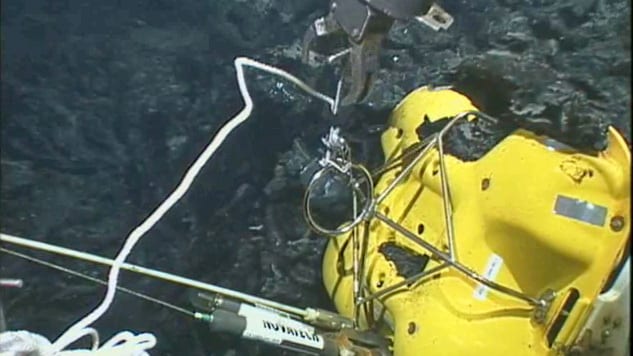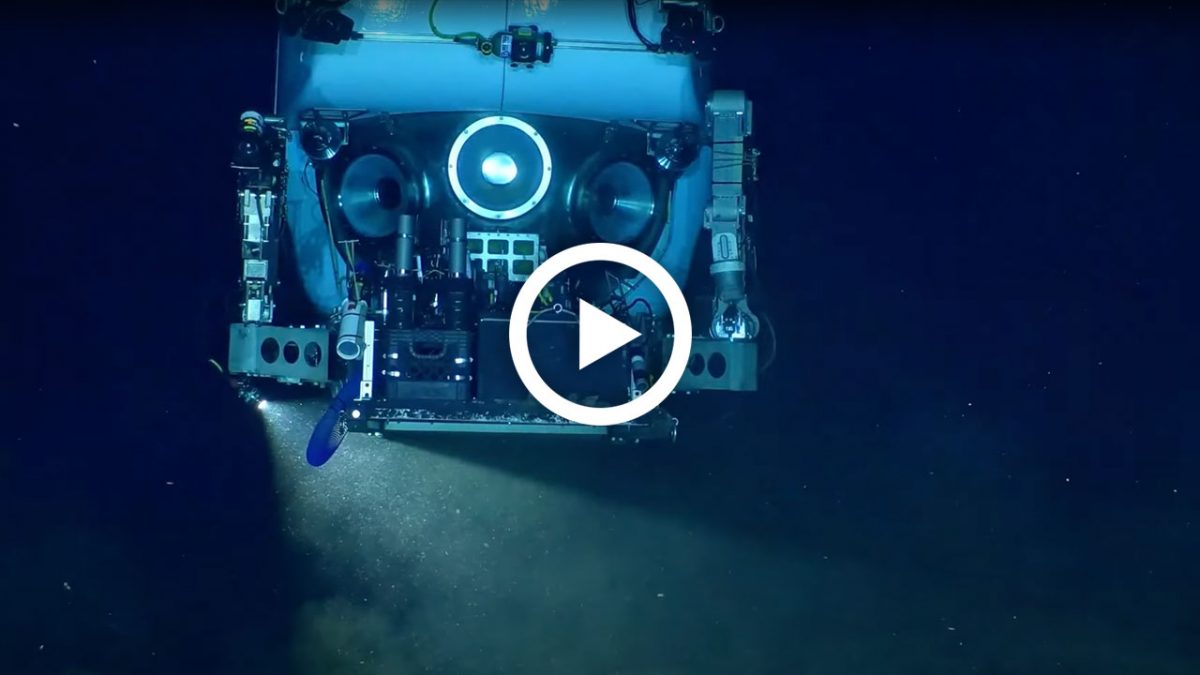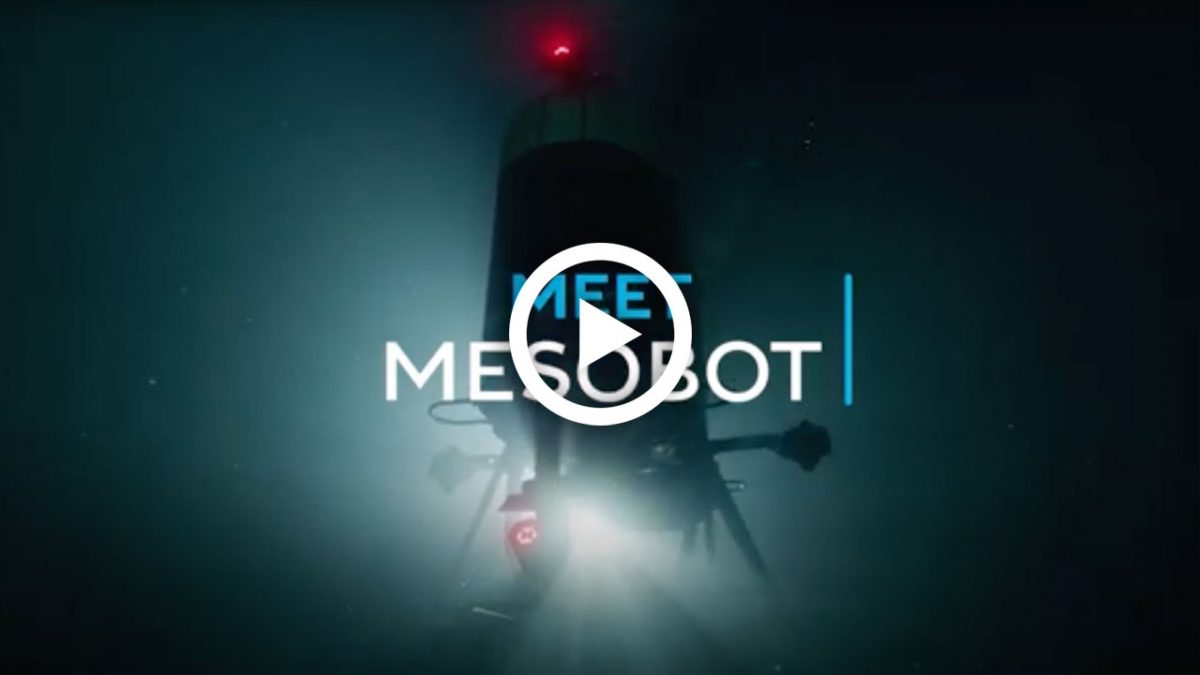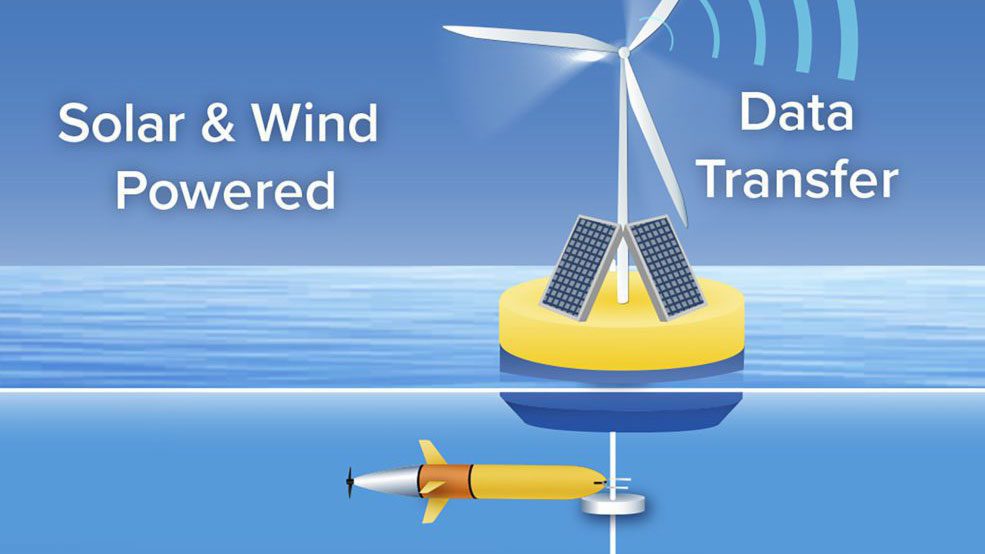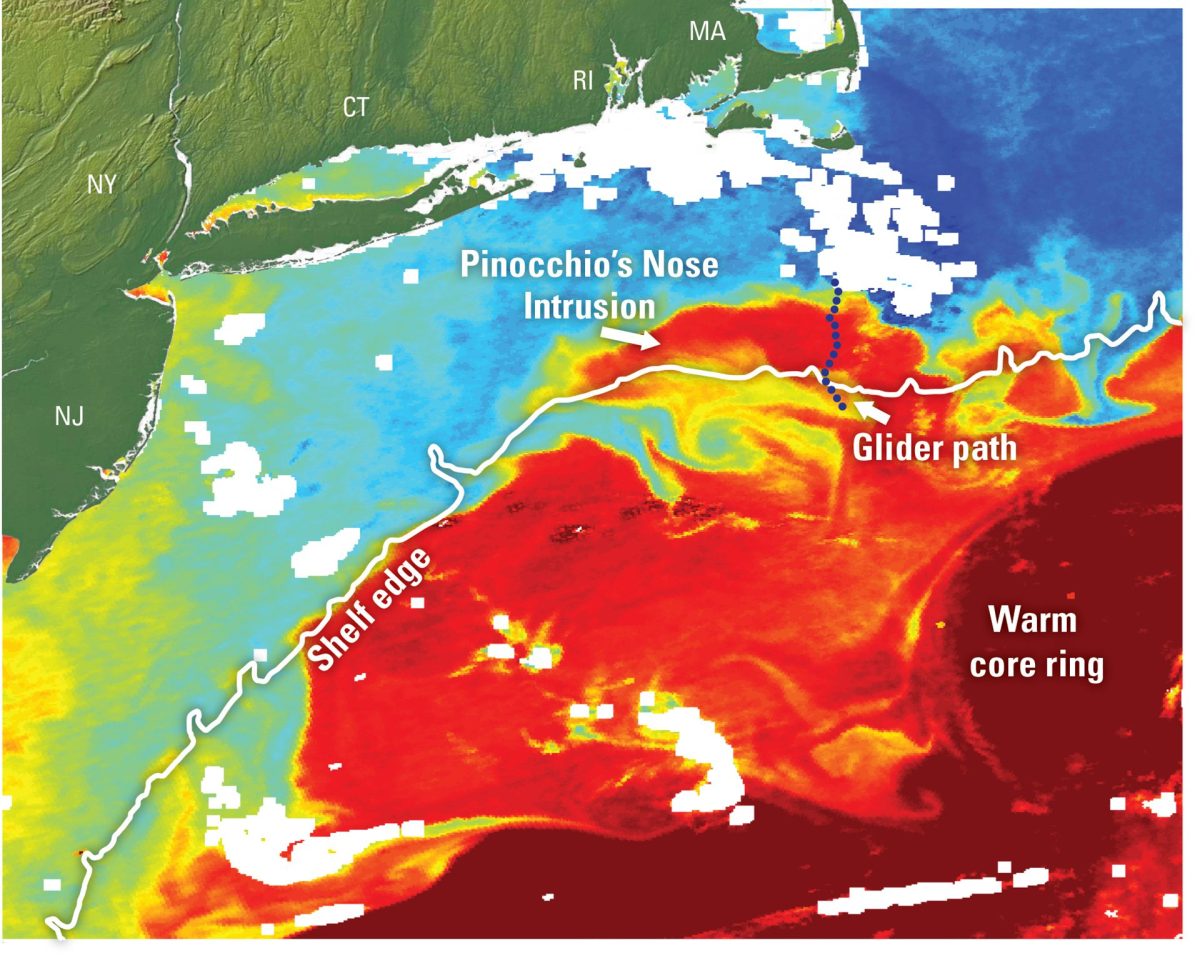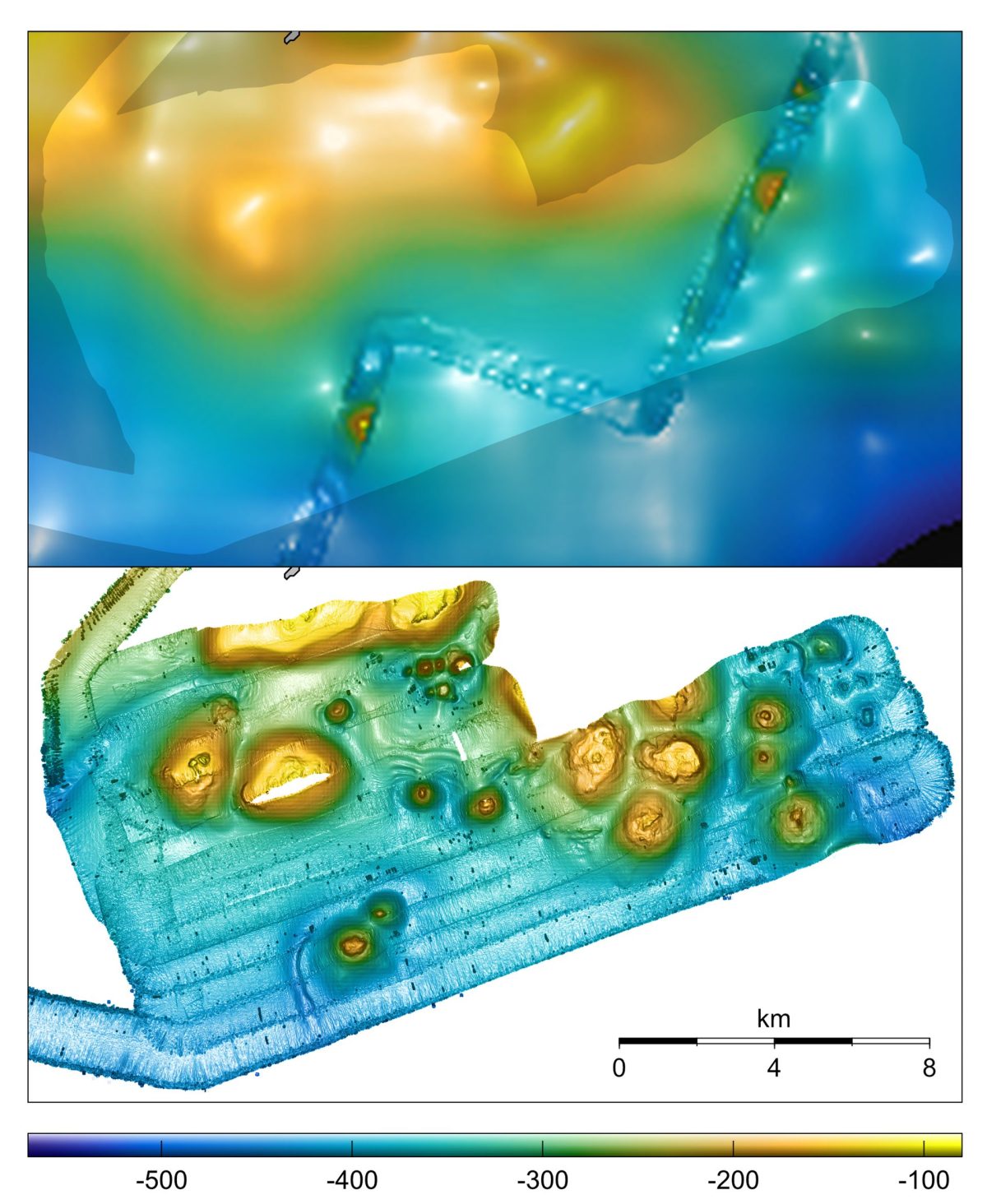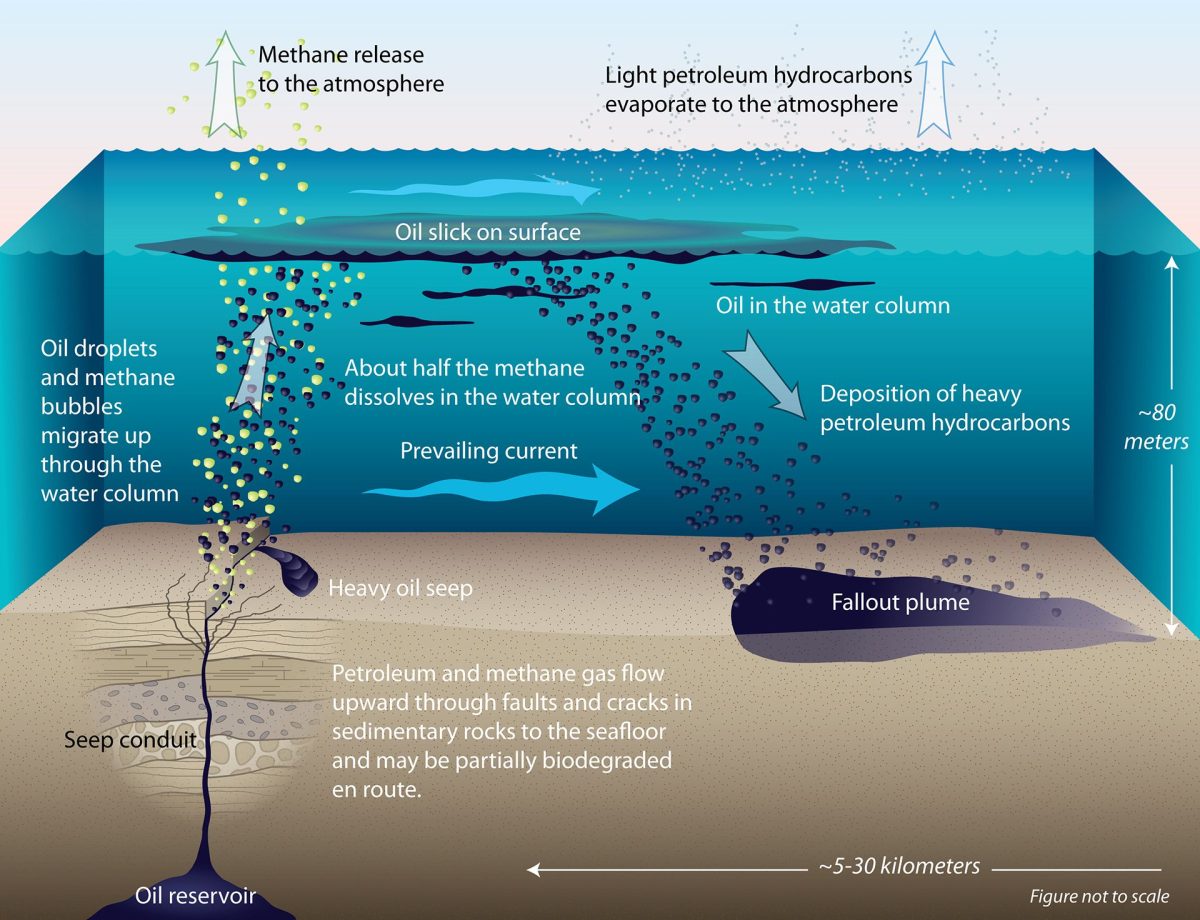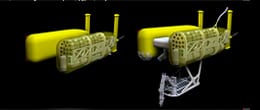In this section
Ocean Topics
- Climate & Weather
- How the Ocean Works
- Ocean & Human Lives
- Ocean Life
- Sustainable Ocean
- Ocean Tech
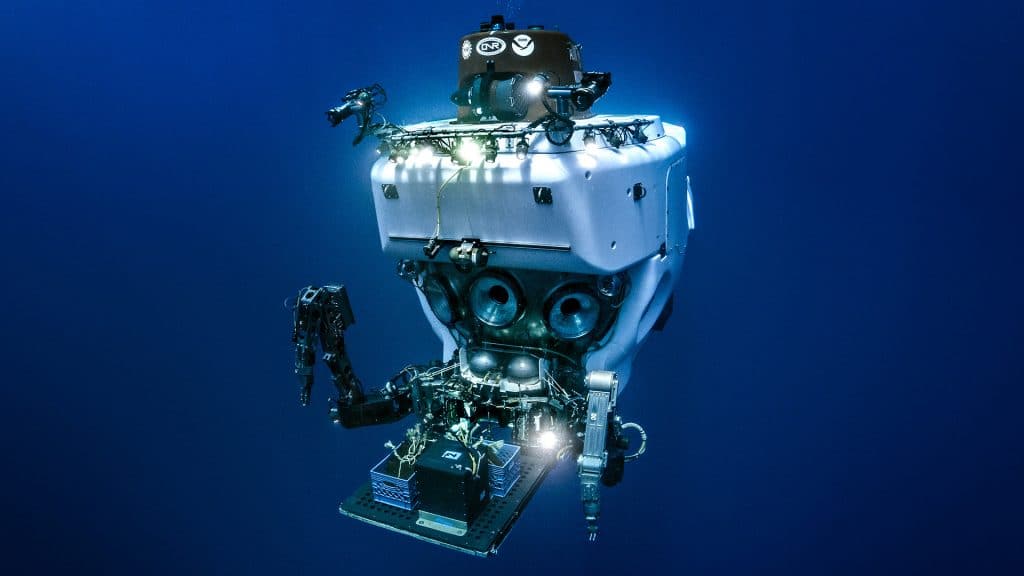
(Photo by Luis Lamar, Woods Hole Oceanographic Institution)
What are underwater vehicles?
In order to understand the ocean, scientists often find they have to get themselves or their instruments into very specific parts of it. Traditionally, researchers have used ships to photograph the depths, to drop floats and drifters into the currents, and to collect samples of water, rock, and marine life. In recent years, the spectrum of available observing tools has grown to include human-occupied submersibles, remote-controlled vehicles, and autonomous robots.
Human Occupied Vehicles (HOVs)
HOVs take small teams of scientists and engineers directly to the seafloor for limited periods of time. They usually accommodate three people and are built to withstand the extreme pressure thousands of meters below the surface of the ocean and permit scientists to make detailed observations, collect specific samples, and place, retrieve, or conduct experiments on the seafloor and in the deep ocean. In addition to the vehicle’s manipulator arm, cameras, sensors, and collection instruments, the HOV also carries another important data-gathering device: the scientists’ own eyes and knowledge of the deep, which is a key advantage of using the vehicles, despite the additional complexity of designing and deploying them.
Remotely Operated Vehicles (ROVs)
ROVs are tethered robots that allow researchers to make observations, collect samples, and conduct experiments while controlling the vehicle from the surface. The vehicles can remain below the surface for a day or more at a time, and can hover like a helicopter over a seafloor target or survey a wide area. The tether sends and receives control signals, vehicle sensor data, and images and allows the pilot to control the vehicle’s manipulator arm in real time to carry out targeted surveys and collections, and help carry out detailed experiments in the deep ocean.
Autonomous Underwater Vehicles (AUVs)
AUVs are programmable, robotic vehicles that, depending on their design, can drift, drive, or glide through the ocean without real-time control by human operators. Some AUVs communicate with operators periodically or continuously through satellite signals or underwater acoustic beacons to permit some level of control. AUVs allow scientists to conduct other experiments from a surface ship while the vehicle is off collecting data elsewhere on the surface or in the deep ocean. Some AUVs can also make decisions on their own, changing their mission profile based on environmental data they receive through sensors while under way.
Hybrid Remotely Operated Vehicle (HROVs)
HROVs combine design advantages of two types of vehicles in a single platform. An HROV can operate as a free-swimming autonomous underwater vehicle (AUV), flying through the ocean like an aircraft to survey and map large areas with onboard sonar, sensors, and cameras. It can also be converted aboard ship into a remotely operated vehicle (ROV), connected to a surface ship via a lightweight, micro-thin fiber-optic tether that permits scientists and operators on the surface to control the vehicle and its manipulator arm to carry out targeted surveys and collections, and help carry out detailed experiments in the deep ocean.
Articles Related to Underwater Vehicles
From Oceanus Magazine
Three questions with Carl Hartsfield
New underwater vehicles in development at WHOI
Learning to see through cloudy waters
The story of a “champion” submersible
Our eyes on the seafloor
3 memorable Jason Dives
Up close and personal
Robots to the Rescue
News Releases
Forty years after the Titanic discovery, WHOI continues to advance ocean research and exploration
WHOI vehicles go to extreme sides of the globe
WHOI receives funding for next-gen ROVs
Sixty Years of Deep Ocean Research, Exploration, and Discovery with Human-Occupied Vehicle Alvin
News & Insights
HOV Alvin temporarily halts engineering test dives
Meet the Alvin 6500 Team: Drew Bewley
Meet the Alvin 6500 Team: Danik Forsman
Meet the Alvin 6500 Team: Lane Abrams
Meet the Alvin 6500 Team: Francis Elder
Wave Glider provides gateway to remote exploration
WHOI-assisted study finds ocean dumping of DDT waste was “sloppy”
Overhaul to take Alvin to greater extremes
Opening our eyes to the deep: Molly Curran
WHOI in the News
Woods Hole scientists explore new deep-sea phenomenon
‘Like a magic carpet.’ New creature seen by Cape resident off Costa Rica now has his name
Navy submarine just tested a torpedo tube-recovered drone
Scientists drop robot into dark ocean, film weird brilliant world
Ocean Tech Features
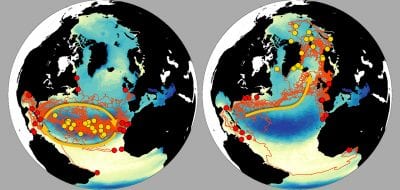
Ocean models are mathematical models of ocean properties and circulation, which helps us to better understand the ocean's influence on…
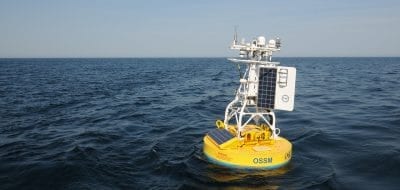
An oceanographic mooring consists of a long cable with an anchor at one end, a float at the other, and…
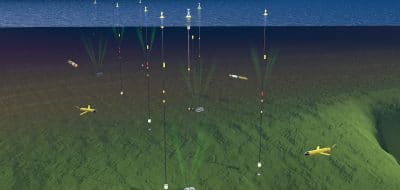
Ocean observatories have suites of instruments and sensors with long-term power supplies and permanent communications links that feed data in…

Oceanographers rely on sophisticated ships to get a firsthand look at the ocean environment and to carry their tools and…
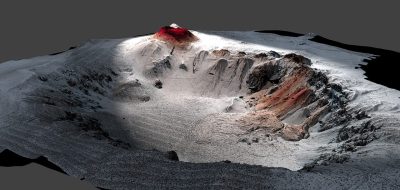
A strong understanding of how sound behaves in different conditions in the ocean helps scientists answer fundamental questions about the…
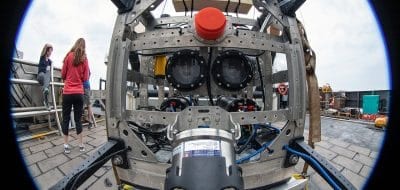
Underwater imaging continues to advance in technology, allowing research to be conducted in the pressure-filled, extreme environments of the ocean.
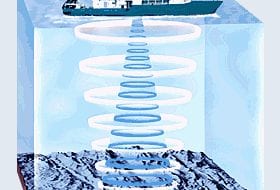
Echo sounding uses sound waves bounced off the ocean bottom to calculate depth. The faster the sound waves return, the…
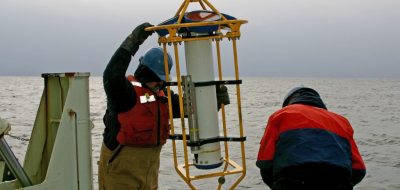
An Acoustic Doppler Current Profiler (ADCP) uses sound waves to measure water current speed at multiple depths, helping scientists study…
Ocean Tech Related Links
HOV Alvin
The deep diving submersible Alvin helped to turn a sunless, freezing marine world into a new frontier.
HROV Nereus
A one-of-a-kind vehicle that works in two modes, a free-swimming, autonomous robot and a remotely operated vehicle linked to a surface ship.
HOV Alvin
A 3-person research submarine taking scientists deep into the ocean.
HOVDeep Sea Challenger
A one-person human-occupied vehicle (HOV) that was built to descend to and explore the deepest places in the ocean.
HROV Nereus
Operating in two modes; as an autonomous, or free-swimming, vehicle for wide area surveys (left) and as a tethered, or cabled, vehicle for sampling and other tasks.
ROV Jason
A remotely operated vehicle that gives scientists immediate, real-time access to the sea floor.
AUV REMUS
An series of autonomous vehicles designed for coastal monitoring as well as survey operations at various depths in the ocean.
AUV Sentry
An autonomous underwater vehicle capable of exploring the ocean down to 4,500 meters.
AUV Seabed
An autonomous vehicle suited to collect highly detailed sonar and optical images of the deep seafloor.
Spray Glider
An autonomous vehicle that can dive to depths of over 1,000 meters and can stay at sea for months at a time.
Center for Marine Robotics
An autonomous vehicle that can dive to depths of over 1,000 meters and can stay at sea for months at a time.
National Deep Submergence Facility
An autonomous vehicle that can dive to depths of over 1,000 meters and can stay at sea for months at a time.
Oceanographic Systems Laboratory
An autonomous vehicle that can dive to depths of over 1,000 meters and can stay at sea for months at a time.
Deep Submergence Laboratory
An autonomous vehicle that can dive to depths of over 1,000 meters and can stay at sea for months at a time.

